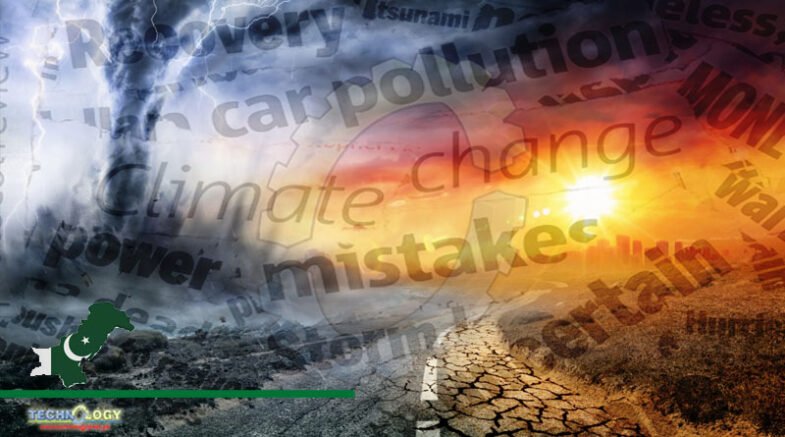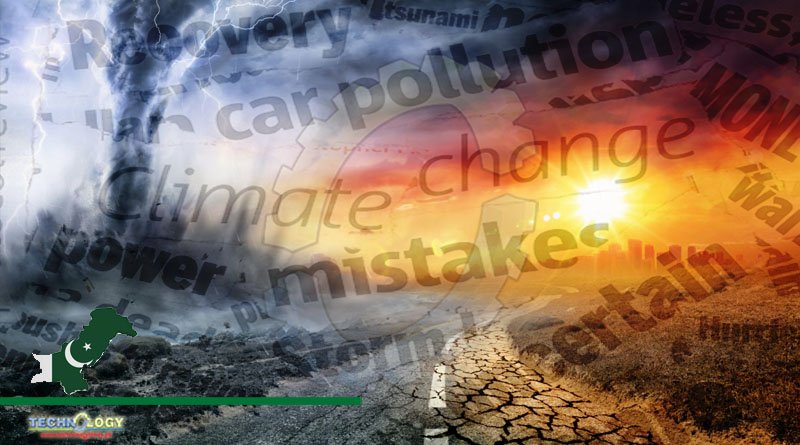Climate change journalism fulfills a unique role in covering one of – if not the most – pressing issues of our time. It includes coverage of the latest environmental predictions and scientific data, thereby contributing to the public debate on climate crisis.

Climate change journalism fulfills a unique role in covering one of – if not the most – pressing issues of our time. It includes coverage of the latest environmental predictions and scientific data, thereby contributing to the public debate on climate crisis.
As Hurricane Ian pounded Florida, we in the United States were once again reminded of the devastating impact of climate change. With hurricanes in the East, cold snaps in the Midwest, and wildfires along the West Coast, the United States is no stranger to the effects of climate change. However, despite the growing frequency of climate change-induced natural disasters, our experience in this country pales in comparison to that of the rest of the world
Meanwhile, Pakistan—the fifth most populous country on Earth—saw firsthand what climate change has in store. Heavier-than-normal rains persisted throughout the rainy season: Between June and August, the country saw 190 percent of the average rainfall over the past 30 years. Because Pakistan has the most glacial ice outside of the polar regions, heat waves over the summer caused even more water to inundate the country. Flooding started to occur in mid-June, but the water could not be drained because of poor infrastructure. As the summer progressed, more and more water accumulated and the floods hit their peak in August, submerging an estimated one-third of the country.
Climate change journalism fulfills a unique role in covering one of – if not the most – pressing issues of our time. It includes coverage of the latest environmental predictions and scientific data, thereby contributing to the public debate on climate crisis.
This summer, 33 million Pakistanis were directly affected by the floods, more than 1,600 people were killed, and billions of dollars in damage have been inflicted. The auxiliary effects of these floods will be felt for years to come. Pakistan heavily relies on foreign food imports to feed its population, and the conflict in Ukraine has already choked Pakistan’s wheat imports. Now, almost one half of all farmland in Pakistan has been destroyed. Expectedly, the country is facing a food crisis. Around the country, people have also lost access to clean water. This lack of sanitation has resulted in countless health complications, most commonly diarrhea and skin abnormalities, disproportionately affecting children. Access to medicine is compromised, and with rail lines submerged, Pakistan’s logistical system has been destroyed. Even after so much devastation, the full effects of the floods are not yet known. Mass unemployment, political unrest, and economic depression are all anticipated.
Too often, discussions of climate change focus on the effects to Western nations. Everyone has heard that one day Miami will be underwater or about unprecedented wildfires in Oregon and California. But catastrophic climate-change-induced disasters happen around the world every day; they just don’t make the news if they are in the developing world. In fact, English-language news networks barely scratched the surface of the issue, instead opting to continue the same uninformative policy analysis of Ukraine, the 2020 election, and a chess cheating scandal. Western outlets like CNN, the BBC, and NBC briefly mentioned floods on air, and several others wrote articles about them. However, they all echoed the same basic information—little analysis was done. Only on the BBC’s Urdu channel could I find complete interviews with affected people, discussions of domestic challenges the country was facing, and analysis of policy initiatives. Unfortunately, this reporting is only available to people who understand Urdu.
“When we in the West say we are “victims of climate change,” we have no idea what we’re talking about.”
This is not an isolated incident. As Western network news companies have become more accountable to shareholders and profits, they have reduced their coverage of nuanced international stories. International stories that are covered usually relate to large attention-grabbing events—like the war in Ukraine. Broadcast news is in the impossible position of delivering both journalism and entertainment. This has unexpectedly led to ratings-driven reporting. With many Americans obviously more invested in domestic politics and stories, this has created a negative feedback loop. Because Americans are less interested in foreign news, outlets run less foreign news stories. This causes Americans to be less informed of international issues and thus less interested. Important issues are framed so that viewers become invested. With an issue such as climate change, this has meant telling viewers how climate change will affect them—how the United States will suffer. While this strategy may lead to more viewership, it does not give viewers the full picture.
While this phenomenon is prominent in the United States, most of the Western world lives in a similar bubble. Because citizens in Western countries are not properly informed about issues such as climate change, there is little pressure on policymakers to properly address important issues. Most of the English media reporting about floods in Pakistan mention that the UN had approved $160 million in an emergency aid appeal and that the United States, along with many other countries, has sent additional aid. While true, proper climate change journalism requires more than just simply echoing facts: These numbers must be put in context. It will take billions of dollars, careful planning, and years of work to bring Pakistan back from this disaster––and shelter it from similar events in the future. The amount of aid currently offered by the international community is just a drop in the bucket of what Pakistan will need.
If we are to have any hope of staving off the effects of climate change, there must be a well-informed, international conversation on possible solutions. If the West is informed about the current effects of climate change and their role in contributing to global emissions, good solutions can be found. In September 2022, Denmark became the first country to enact climate reparations. While the 13 million dollar fund is still just a fraction of what is needed, this is a good first move to achieving climate equity. This move by Denmark should be reported on more widely so that people in other Western nations can pressure their governments to enact similar programs.
Even so, it is natural to ask why we should care so much about climate change in countries like Pakistan. The answer is quite simple: we live in a globalized world, where problems in one country are not isolated. Pakistan, for example, is a major regional ally in the Middle East for the United States and many Western countries. With the fall of the Afghan government, the rise in global terrorism, and general instability across the region, the West needs a healthy, democratic ally in the Middle East. But the floods in Pakistan are bound to destabilize the country, putting US and Western national security at risk. Floods in Pakistan are not just floods in Pakistan.
The West needs to do a better job of educating its citizens about international issues––especially with climate change through climate change journalism. Educating the public does not mean only reporting the facts, but placing them in context: for instance, why did the floods in Pakistan happen? Who was affected? Are people happy with the government’s response? What happens if the Pakistani government falters? It only takes four questions to go from rising waters to a direct threat to American national security. It’s time to recognize that the West is a small part of the world. Staying informed about what is happening around the world is our most important responsibility as we stare down the biggest challenge humanity has ever faced.
Originally published at Brown Political Review
